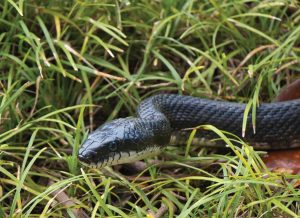Years ago, when I was a newlywed and newly transplanted from the city to the farm, I was called upon to cook the holiday meal for the entire family. I announced to my mother, via long distance phone conversation, that I would be serving venison from the deer my husband had harvested during hunting season.
In my rural community, the farm wives gardened and canned vegetables, kept chickens for eggs, and cooked the wild game that their husbands brought home. I wished to emulate their way of “living off the land.”
However, when my mother’s voice declaring in no uncertain terms that the holiday meal must be turkey and all the fixings, I caved. I went to the supermarket and bought a huge turkey. I slaved away in the kitchen, starting in the middle of the night, stuffed the turkey and fixed all the traditional sides. I set a pretty table with my wedding-gifted wares and served the meal with a tenuous smile.
Years later, as I walked through my bottomland woods, that memory came popping into my head.
The day started all frosty and glorious. I was taking a moment to walk, trying to calm the jitters, when I spotted prints of three long toes in the sandy soil. “Galliformes,” I said aloud, smiling. Eastern wild turkey, Meleagris gallopavo, in the order Galliformes.
Wild turkeys’ habitat requirements include forests. They feed and nest upon the ground, flying up into trees to roost. Predators think they are delicious, yet wild turkeys survive and proliferate in Illinois. That was not always the case.
When my husband and I first started our lives together, eastern wild turkeys were non-existent in our county. Much earlier, wild turkeys had been extirpated from Illinois – excessive killing and reduction in habitat being the main causes.
A priority of the Civilian Conservation Corps (CCC) in the 1930s was stocking forest areas
with turkey and other wildlife. The workers raised eastern wild turkeys to let loose. However, the released birds, having been hatched by incubators and reared in pens, would return starving with their wings drooping. Without a mother turkey to show them, they never learned to scratch on the forest floor for grubs and acorns.
Eventually, the reforestation begun by the CCC and a recolonization of turkeys from other states brought about a flourishing population of turkeys in Shawnee National Forest.
In 1959, the Illinois Department of Conservation (IDOC), now the Illinois Department of Natural Resources (IDNR), began stocking wild turkeys in several counties. By using cannon nets, the IDOC was able to capture the naturally wary birds as they fed at baited areas where flocks thrived. When wild turkeys were brought to Jasper County in February 1991, my husband was among the volunteers who assisted with their release.
Some of the credit for the repopulation of turkey in Illinois must be given to individuals who have established wildlife habitat on their own land, and to the USDA’s Conservation Reserve Program, which provides incentives for the conversion of ag fields to woodlands and prairies.
To assure the proliferation of healthy turkey populations, the IDNR institutes hunting regulations and works to enhance habitat on state lands.
Now, on summer days, it is not unusual for me to see hens leading their poults to a nearby clover field where the tastiest of grasshoppers can be found.
The day I remembered my mother’s dictum of turkey and all the fixings, I selected from the freezer a wild turkey (harvested during the spring hunting season) and homegrown garden vegetables. In nervous anticipation, I would concoct my “renowned” wild turkey stew, a cross between vegetable soup and gumbo, minus the shrimp.
My special guests were my daughter’s parents-in-law. Fortunately, they did not opt for cheese and crackers when I informed them of the wild game dishes. During the meal, in a complimentary tone tinged with an accent that suggested an eastern European heritage, the father-in-law asked, “Is this what is called turkey with fixings?”









